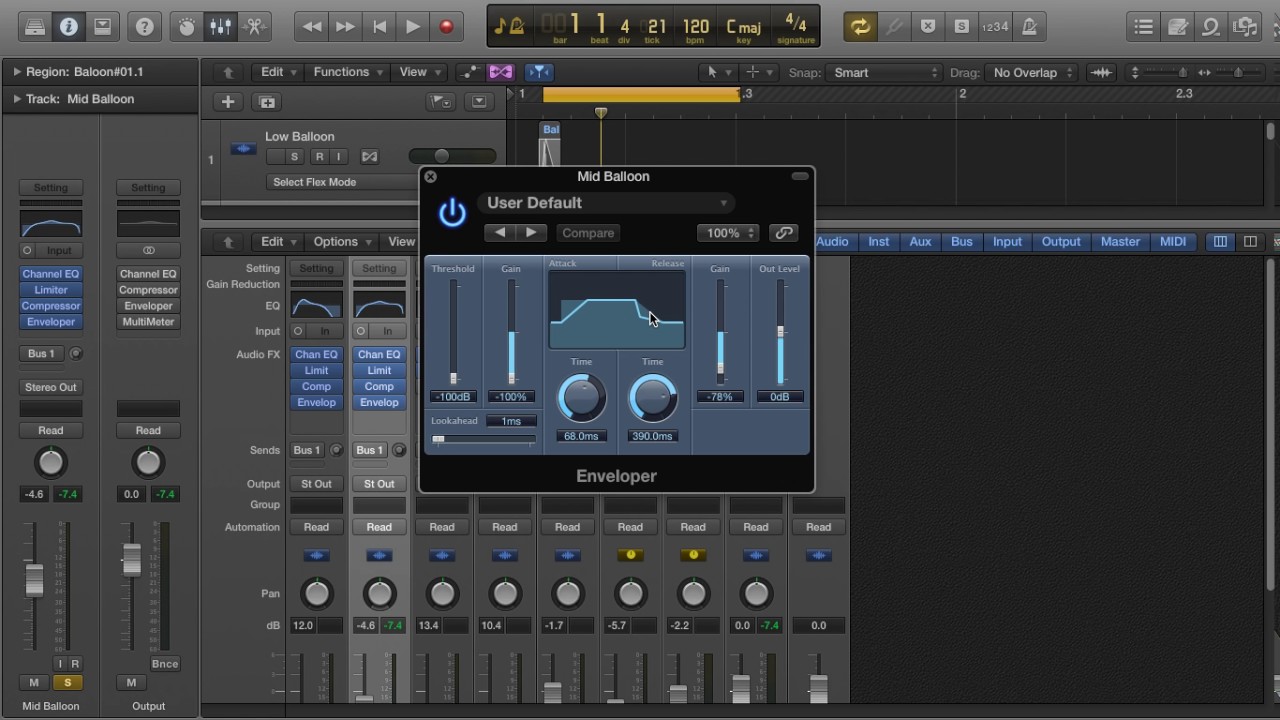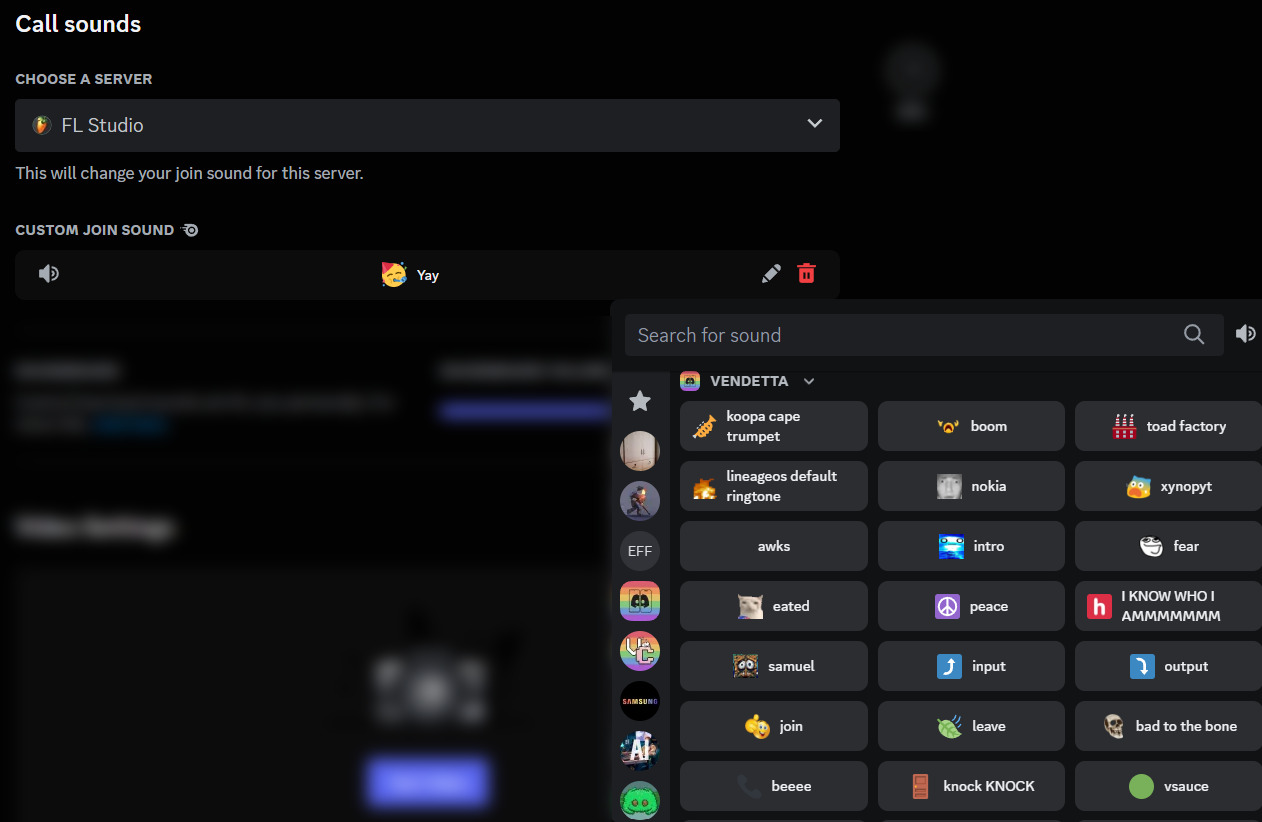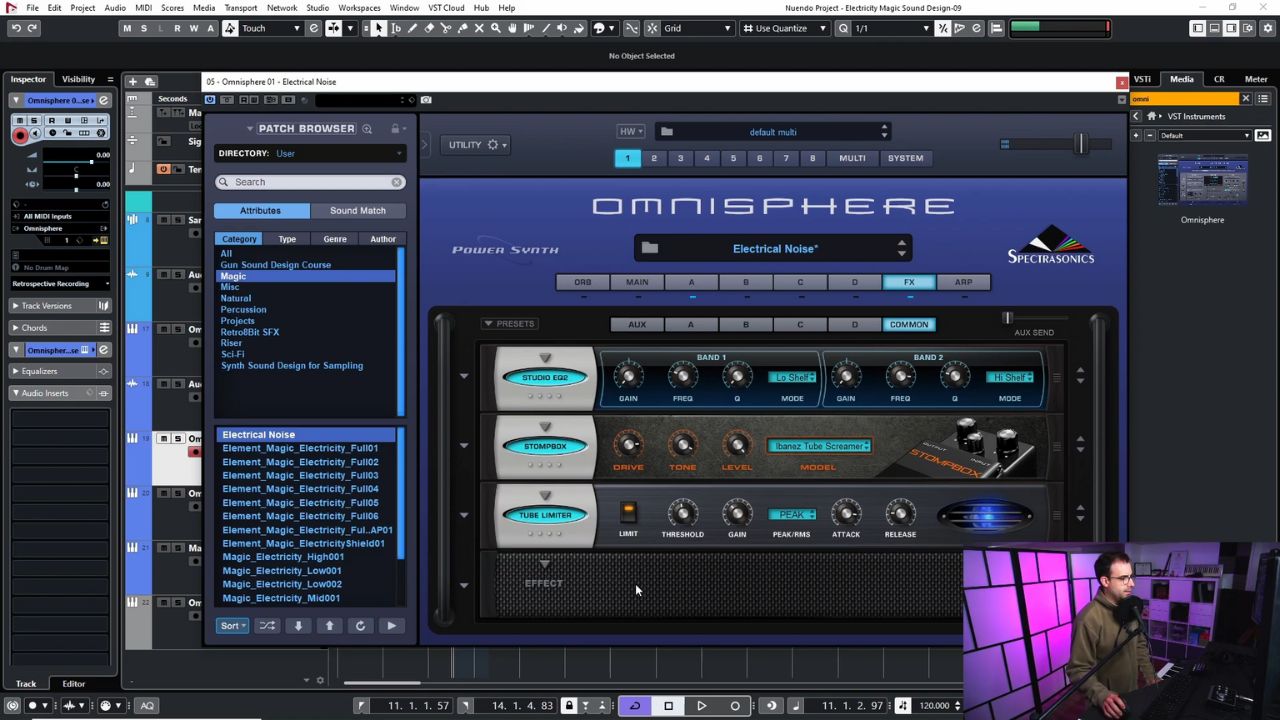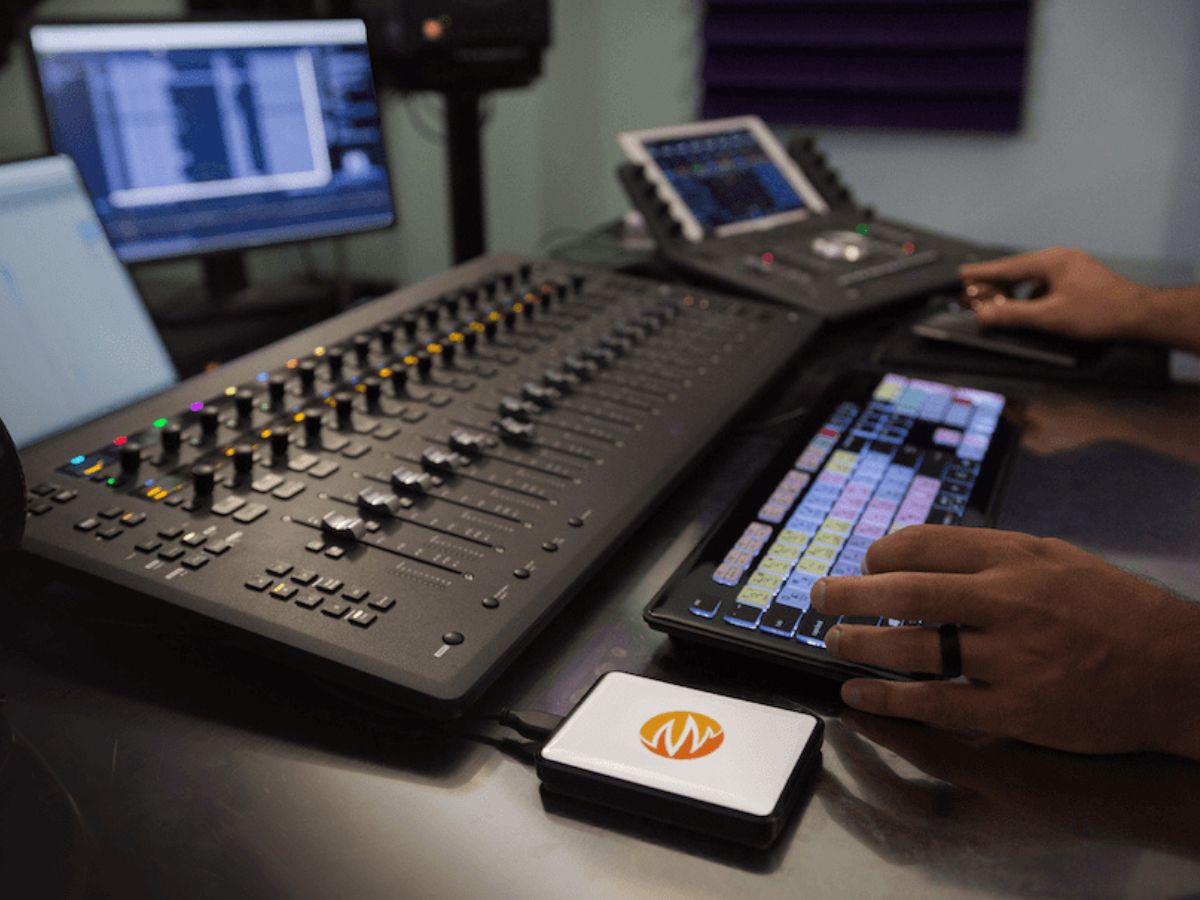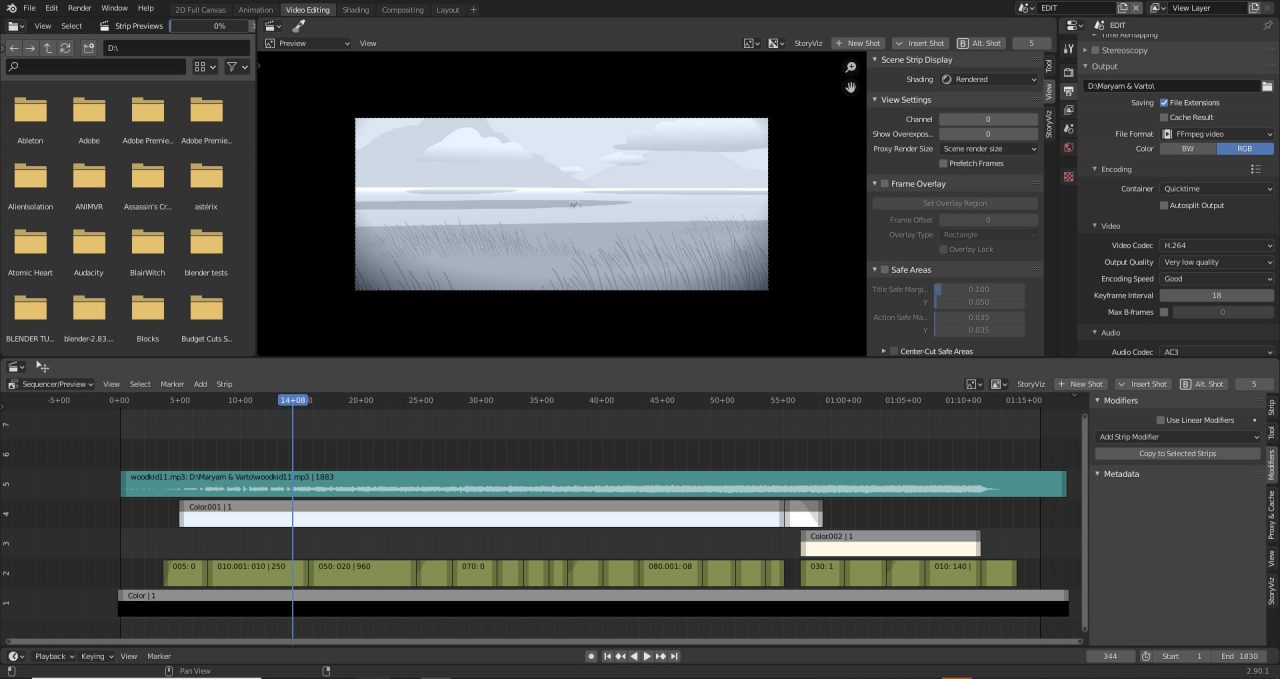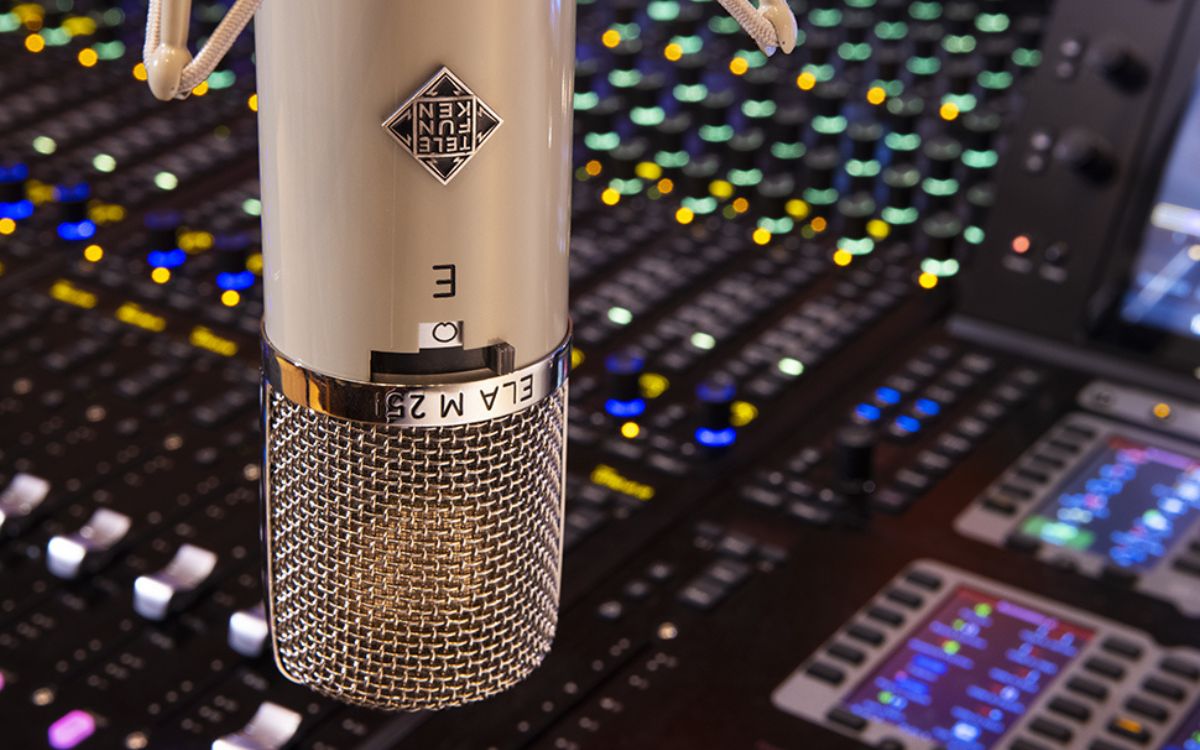Home>Production & Technology>Sound Effects>How To Extract Sound Effects In Audio In A Fandub


Sound Effects
How To Extract Sound Effects In Audio In A Fandub
Modified: January 22, 2024
Learn how to extract sound effects from audio files in a fandub, and enhance your video creations with captivating audio elements. Master the art of utilizing sound effects effectively!
(Many of the links in this article redirect to a specific reviewed product. Your purchase of these products through affiliate links helps to generate commission for AudioLover.com, at no extra cost. Learn more)
Table of Contents
- Introduction
- Understanding Sound Effects in Audio
- Different Types of Sound Effects
- Identifying Sound Effects in a Fandub
- Gathering the Necessary Tools
- Extracting Sound Effects from Audio
- Using Audio Editing Software
- Saving and Exporting Extracted Sound Effects
- Tips and Techniques for a Successful Extraction Process
- Conclusion
Introduction
Welcome to the exciting world of sound effects in audio! Sound effects play a crucial role in enhancing the overall listening experience, whether in movies, video games, or even fandubs. These effects add depth, emotion, and realism to the content, creating a more immersive and captivating environment for the audience.
In this article, we will explore the art of extracting sound effects from audio specifically in a fandub context. Fandubbing, also known as fan-made dubs, involves revoicing the dialogues of a particular media piece, such as a movie or TV show, in a different language.
Identifying and extracting sound effects from the original audio source is an important step in fandubbing. By obtaining these sound effects, fans can create a more authentic and professional-sounding dub, enhancing the overall quality of their work.
Throughout this article, we will delve into the different types of sound effects commonly found in audio, discuss the process of identifying and extracting them from a fandub, and provide some tips and techniques for a successful extraction process.
So, whether you are a seasoned fandubber or a curious enthusiast, let’s dive in and discover the fascinating world of sound effects extraction in audio for fandubs.
Understanding Sound Effects in Audio
Before we dive into the process of extracting sound effects from audio, it’s important to have a clear understanding of what sound effects are and how they contribute to the overall audio experience.
Sound effects are artificial sounds that are added to audio recordings to enhance or create specific auditory experiences. They can range from subtle background noises to more prominent and recognizable sounds like explosions, footsteps, or door creaks.
Sound effects serve several purposes. They can establish the setting and environment, provide context to a scene, evoke emotional responses, and add a sense of realism and immersion to the audio. Whether it’s the roar of a lion in the jungle, the creaking of a door in a haunted house, or the swooshing sound of a sword swinging through the air, sound effects have the power to transport listeners to different worlds.
Sound effects are typically divided into categories based on their functions. These categories include:
- Realistic sound effects: These are sounds that closely resemble their real-life counterparts. Examples include footsteps, car engines, and animal noises.
- Atmospheric sound effects: These sounds help create the overall ambiance and mood of a scene. They can include elements like rain, wind, or the buzz of a city.
- Impact sound effects: These sounds are associated with actions and physical interactions, such as explosions, punches, or crashes.
- Foley sound effects: Foley is the reproduction of everyday sounds added to audio recordings. This can include sounds like footsteps on different surfaces, the rustling of clothing, or the clinking of objects.
- UI sound effects: UI, or user interface, sound effects are those auditory cues used in interactive media, such as video games or apps. They can include button clicks, notifications, or menu navigation sounds.
Understanding these different categories of sound effects will help you identify and extract the specific sounds you need for your fandub project. Now, let’s move on to the next section to learn how to locate and extract sound effects from audio recordings.
Different Types of Sound Effects
Sound effects are an integral part of audio production, and they come in various types and categories. Familiarizing yourself with these different types of sound effects will help you better understand their role in audio and enable you to extract them effectively for your fandub project.
1. Environmental Sound Effects: These sound effects help create the atmosphere and background of a scene. They include sounds like rain, wind, birds chirping, or waves crashing on a beach. Adding environmental sound effects can make your fandub more immersive and realistic.
2. Action Sound Effects: Action sound effects are associated with movements, impacts, and interactions. Examples include punches, kicks, gunshots, sword clashes, or explosions. These types of sound effects are crucial to add intensity and excitement to your fandub’s action sequences.
3. Footsteps Sound Effects: Footstep sound effects are commonly used to indicate character movement. Different surfaces, such as concrete, grass, or wood, produce distinct footstep sounds. By incorporating accurate footsteps sound effects into your fandub, you can enhance the realism of the scenes.
4. Transition Sound Effects: Transition sound effects are often used to denote scene changes or shifts in the narrative. They can include sounds like whooshes, swooshes, or door opening and closing sounds. These sound effects help create smooth transitions and maintain a seamless flow in your fandub.
5. Impact Sound Effects: Impact sound effects are used to emphasize physical actions or collisions. They can include sounds like punches, slaps, crashes, or breaking glass. Incorporating impact sound effects appropriately can make your fandub’s fight scenes or intense moments more impactful.
6. Weapon Sound Effects: Weapon sound effects are specific to weaponry used in your fandub. They can include sounds like gunshots, sword swishes, arrow releases, or explosions caused by bombs or grenades. Accurate weapon sound effects help in creating a believable and immersive audio experience for your audience.
These are just a few examples of the different types of sound effects you may encounter in your fandub project. Understanding these categories can help you identify the specific sounds you need and ensure that your fandub is enriched with high-quality and appropriate sound effects.
Next, let’s explore the process of identifying and gathering the necessary tools for extracting sound effects from audio recordings in a fandub context.
Identifying Sound Effects in a Fandub
When working on a fandub project, it’s essential to identify the specific sound effects you want to extract from the original audio source. This involves carefully listening to the audio and pinpointing the moments where sound effects are present. Here are some steps to help you identify sound effects in a fandub:
- Watch and analyze the original material: Start by watching the original material, whether it’s a movie, TV show, or video game cutscene. Pay attention to the different scenes and actions taking place. This will give you an overall idea of the sound effects you might need for your fandub.
- Listen attentively: While watching the original content, focus on the audio and listen carefully to the background noises, impacts, footsteps, and other sounds that contribute to the overall ambiance. By actively listening, you can identify the specific sound effects you want to extract for your fandub.
- Take notes: As you watch and listen, make notes of the specific timecodes or scenes where you hear the sound effects you want to extract. These notes will be helpful when you go back to extract the sound effects later.
- Contextualize the sound effects: Consider the context in which the sound effects occur. Are they tied to specific actions, characters, or events in the scene? Understanding the context will help you ensure that the extracted sound effects fit seamlessly into your fandub.
- Pay attention to details: Be attentive to the nuances of the sound effects. Note if there are variations in intensity, pitch, or duration. These details will contribute to the realism and accuracy of your fandub’s sound effects.
By following these steps and actively listening to the original content, you can effectively identify the sound effects you want to extract for your fandub project. Once you have identified these sound effects, the next step is to gather the necessary tools to extract them from the audio recording.
Let’s explore the tools you’ll need for sound effects extraction in the next section.
Gathering the Necessary Tools
When it comes to extracting sound effects from audio for your fandub project, having the right tools is essential. These tools will enable you to accurately capture and extract the sound effects you need. Here are some essential tools to gather:
- Audio Editing Software: A reliable audio editing software is the backbone of your sound effects extraction process. There are several options available, both free and paid, such as Audacity, Adobe Audition, or Logic Pro. Choose one that suits your needs and is compatible with your operating system.
- Original Audio Source: You’ll need access to the original audio source from the material you’re fandubbing. This can be a DVD, Blu-ray, video game files, or any other format that contains the audio track you want to extract sound effects from. Ensure that you have legal access to this material.
- Audio Recording Device: In some cases, you may need to capture sounds from a physical source, such as recording footsteps or objects being manipulated. A good-quality microphone or portable audio recorder will help you capture these sounds accurately.
- Headphones/Speakers: Having a reliable pair of headphones or speakers is crucial to accurately listen to the audio while extracting sound effects. Choose a pair that provides clear and detailed sound reproduction.
- Storage Space: Ensure that you have enough storage space on your computer or external hard drive to store the extracted sound effects. Sound files can take up a significant amount of space, especially if you’re working with high-quality audio.
Once you have gathered these necessary tools, you’ll be well-equipped to start the process of extracting sound effects from the audio recordings. In the next section, we will explore the step-by-step process of extracting sound effects using audio editing software.
So let’s dive into the next section and learn how to extract sound effects from audio recordings!
Extracting Sound Effects from Audio
Now that you have the necessary tools in place, it’s time to dive into the process of extracting sound effects from the audio recordings for your fandub project. Follow these steps to extract sound effects using audio editing software:
- Import the audio: Open your audio editing software and import the audio file or files containing the sound effects you want to extract. Make sure you have the original audio source ready for reference.
- Identify the sound effect: Locate the specific part of the audio file that contains the sound effect you want to extract. This can be a particular sound, such as a car engine, a door opening, or an explosion. Use the notes you took during the identification process to guide you.
- Zoom in and isolate the sound effect: Zoom in to the waveform of the audio to get a closer look and better precision. Use the selection tools in your audio editing software to isolate the section that contains the sound effect you want to extract.
- Remove unwanted audio: If there are any unwanted elements surrounding the sound effect, such as background noise or dialogue, use audio editing techniques like noise reduction or editing the waveform to remove these unwanted parts. This will ensure that you extract a clean and isolated sound effect.
- Enhance the sound effect (optional): Depending on the quality and desired outcome, you may want to enhance the extracted sound effect. This can involve adjusting the levels, applying equalization, or adding effects to make it sound more polished and suitable for your fandub.
- Save the extracted sound effect: Once you’re satisfied with the extracted sound effect, save it as a separate audio file in a format that is suitable for your fandub project, such as WAV or MP3.
- Repeat the process: Repeat these steps to extract any other sound effects you need for your fandub project. Take your time to ensure accuracy and quality in each extraction.
Remember to save your work regularly and keep backups of your files to avoid any accidental loss of progress.
Once you have successfully extracted the sound effects you need, you can proceed to the next steps of incorporating them into your fandub project. You now have the key ingredients to create an immersive and professional-sounding fandub.
In the next section, we will provide some tips and techniques to enhance your sound effects extraction process. Stick around to level up your fandub game!
Using Audio Editing Software
Audio editing software is an essential tool when it comes to extracting and manipulating sound effects for your fandub project. It provides you with the necessary capabilities to precisely isolate, edit, and save the desired sound effects. Here are some tips for effectively using audio editing software:
- Familiarize yourself with the software: Take the time to explore and understand the features and functions of the audio editing software you’re using. Learn how to navigate the interface, use the selection tools, apply effects, and save your work.
- Use keyboard shortcuts: Get acquainted with the keyboard shortcuts available in the software. Keyboard shortcuts can significantly speed up your workflow, making it easier to perform tasks like zooming in, selecting regions, and applying effects. Refer to the software’s documentation to learn the specific shortcuts.
- Zoom in for precision: When isolating sound effects, zoom in on the waveform to get a closer look. This allows for more precise selection and editing, ensuring that you extract the desired sound effect accurately.
- Take advantage of audio visualization: Most audio editing software provides visual representations of the audio waveforms. Use these visual cues to identify sound patterns, distinguish between different elements, and locate specific sound effects within the audio file.
- Utilize selection and editing tools: Take advantage of the selection tools available in the software to isolate the sections containing the sound effects. Experiment with the different editing tools to remove unwanted audio, apply effects, and enhance the extracted sound effects.
- Experiment with audio effects: Audio editing software often comes with a wide range of effects and filters that you can apply to the extracted sound effects. Explore these effects to enhance the quality or add uniqueness to your sound effects. However, be mindful to maintain the integrity of the original sound.
- Save and export in the appropriate format: Before saving the extracted sound effects, ensure that you choose the appropriate file format and settings that match your fandub project requirements. Common formats include WAV, MP3, and AIFF. Pay attention to the sample rate, bit depth, and overall quality settings to ensure optimal audio playback.
- Practice and experiment: Becoming proficient with audio editing software takes time and practice. Experiment with different techniques, try out various effects, and challenge yourself to achieve the desired results. The more you practice, the better you’ll become at efficiently and effectively extracting sound effects.
By utilizing these tips and becoming familiar with your chosen audio editing software, you’ll be well-equipped to extract, edit, and enhance sound effects for your fandub project.
In the next section, we’ll provide some helpful tips and techniques to optimize your sound effects extraction process. Stay tuned!
Saving and Exporting Extracted Sound Effects
Once you have successfully extracted and edited the sound effects for your fandub project, it’s important to save and export them properly. Saving and exporting sound effects in the right format and settings ensures compatibility and optimal playback quality. Here are some tips for saving and exporting your extracted sound effects:
- Choose the appropriate file format: Consider the intended use of the sound effects and the requirements of your fandub project. Common formats for sound effects include WAV, MP3, and AIFF. WAV files offer lossless audio quality, while MP3 files are more compressed and suitable for online distribution. AIFF files provide high-quality audio and are commonly used in professional audio production.
- Adjust sample rate and bit depth: Ensure that you set the appropriate sample rate and bit depth while exporting your sound effects. The sample rate determines the number of audio samples played per second, with standard rates being 44.1kHz or 48kHz. The bit depth affects the dynamic range and clarity of the sound, with 16-bit or 24-bit being common choices.
- Organize your files: Create a folder structure and naming convention to keep your extracted sound effects organized. This will make it easier to locate and utilize the sound effects in your fandub project. Consider categorizing the sound effects based on their types or functionality to facilitate efficient browsing and usage.
- Consider metadata: Metadata is additional information embedded within the audio file, such as the title, artist, and copyright information. Adding relevant metadata to your extracted sound effects can provide useful information and ensure proper crediting if you share or distribute the sound effects.
- Use appropriate file names: Give your extracted sound effects meaningful and descriptive file names that reflect their content. This will make it easier to search for specific sound effects when working on your fandub project and help maintain an organized library of sound effects for future use.
- Keep backup copies: It’s always a good practice to keep backup copies of your extracted sound effects. This ensures that you have a copy of the original files in case of accidental loss or corruption. Consider storing backups on external hard drives or cloud storage platforms for extra security.
By following these tips and best practices, you can save and export your extracted sound effects in a manner that maintains their quality and usability for your fandub project. Remember to consult the documentation of your specific audio editing software for instructions on saving and exporting files.
In the next section, we’ll provide some additional tips and techniques to help you optimize the extraction process and improve the overall quality of your sound effects. So, stay tuned for more valuable insights!
Tips and Techniques for a Successful Extraction Process
Extracting sound effects from audio for your fandub project requires a combination of technical expertise, attention to detail, and creativity. Here are some tips and techniques that can help you optimize the sound effects extraction process and achieve high-quality results:
- Choose the right source material: Select source material that has clear and distinct sound effects. This will make the extraction process easier and result in higher-quality sound effects.
- Utilize multiple sources: If available, gather multiple sources of the same sound effect. This gives you more flexibility and options during the extraction process, allowing you to choose the version that best suits your fandub project.
- Focus on timing: Pay attention to the timing and synchronization of the extracted sound effects. Make sure they align perfectly with the actions or events in your fandub project to maintain a seamless and realistic audio experience.
- Use crossfades and fades: Apply crossfades or fades at the beginning and end of the extracted sound effects to avoid abrupt starts and cuts. This ensures smooth transitions and helps the sound effects blend well into your fandub’s overall audio mix.
- Experiment with layering: Layering multiple sound effects can add depth and richness to your fandub’s audio. Try combining different sound effects to create unique and customized sounds that enhance the impact and realism of your scenes.
- Be mindful of volume levels: Ensure that the volume levels of the extracted sound effects are balanced with the dialogue and other elements in your fandub. Adjust the volume levels as needed to maintain clarity and prevent any sound effects from overpowering the overall audio mix.
- Consider reverberation and spatial effects: If the original audio has reverberation or spatial effects that contribute to the sound effects, experiment with adding similar effects to your extracted sound effects. This helps create a cohesive and immersive audio environment for your fandub project.
- Continuously evaluate the sound effects: Regularly review and listen to the extracted sound effects within the context of your fandub project. Assess how well they integrate with the dialogue, music, and other audio elements. Make any necessary tweaks or adjustments to ensure a seamless and cohesive audio experience.
- Collaborate and seek feedback: Share your work-in-progress with fellow fandubbers or trusted listeners. Seek their input and constructive feedback on the quality and effectiveness of the extracted sound effects. This collaboration can lead to valuable insights and improvements in the final result.
- Immerse yourself in fandub communities: Engage with other fandubbers and enthusiasts who have experience in sound effects extraction. Participate in online communities, forums, and social media groups to learn from their techniques and share your own expertise. Collaborating and exchanging ideas with like-minded individuals can help you refine your skills and stay updated on the latest trends and practices.
Remember, practice makes perfect. Embrace the learning process, be patient, and keep refining your sound effects extraction skills. With time and experience, you’ll be able to extract and incorporate captivating sound effects that elevate the quality and impact of your fandub project.
In the next section, we’ll conclude our exploration of sound effects extraction in a fandub context. Stay with us!
Conclusion
Sound effects play a vital role in creating an immersive and engaging audio experience, especially in fandub projects. Extracting and utilizing the right sound effects can significantly enhance the quality and realism of your fandub. Through this article, we have explored the process of identifying, extracting, and utilizing sound effects in a fandub context.
We began by understanding the different types of sound effects and their significance in audio production. By identifying sound effects in the original material and gathering the necessary tools, we set the foundation for a successful extraction process.
We then moved on to the practical steps of extracting sound effects using audio editing software. We discussed the importance of zooming in, isolating the sound effect, and removing unwanted elements to ensure accurate and clean extractions.
Furthermore, we provided tips and techniques to optimize the extraction process, such as choosing the right source material, focusing on timing, and enhancing sound effects through layering and effects.
Finally, we emphasized the importance of continuous evaluation, collaboration, and seeking feedback to refine and improve the extracted sound effects for your fandub project.
By implementing these strategies and honing your skills in sound effects extraction, you can create fandubs that captivate and immerse your audience in a world of high-quality audio.
Remember, sound effects are not just background noise, but powerful tools that enhance storytelling and create compelling auditory experiences. So, embrace your creativity, experiment with different sound effects, and let your fandub project shine with the perfect audio palette.
Now it’s time for you to embark on your own sound effects extraction journey. Enjoy the process, and may your fandub project resonate with amazing sound effects that take it to new heights!

